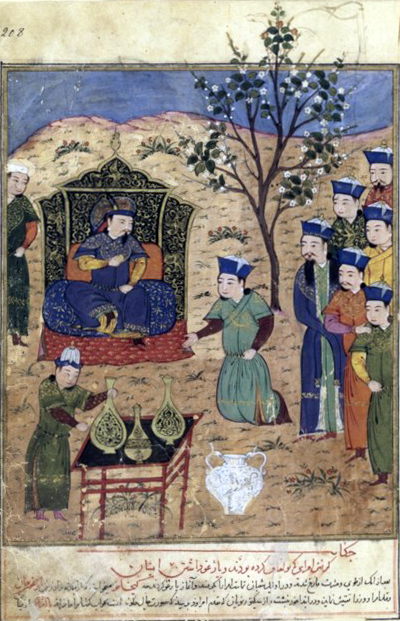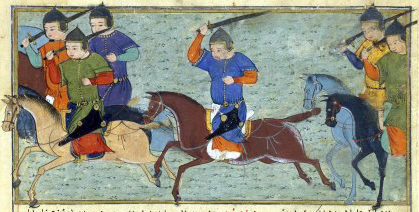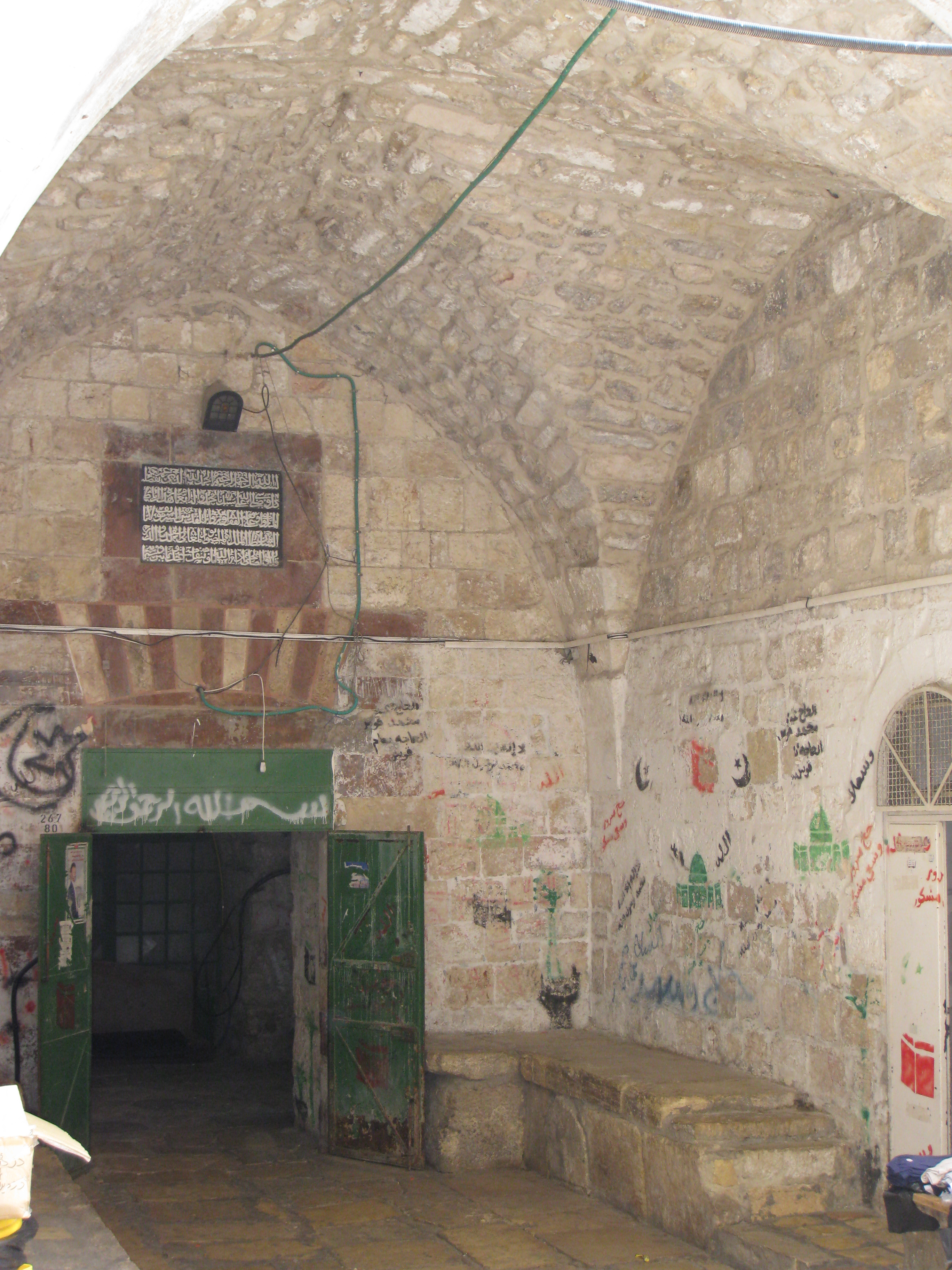|
Samagar
Samagar, also Cemakar, was a Mongol general of the Il-Khan ruler Abaqa Khan (1234–1282), mentioned as leading a Mongol invasion force in 1271, in attempted coordination with the Ninth Crusade. Background Little is known about Samagar, but he is mentioned in the context of attempted operations between the Mongols and the Crusaders. In 1269, the English Prince Edward (the future Edward I of England, Edward I), had led a small force to the Holy Land as part of the Ninth Crusade. When he arrived in Acre on May 9, 1271, the situation in the Holy Land was particularly critical, as the Mamluk leader Baibars was besieging the Frankish noble Bohemond VI in the city of Tripoli, Libya, Tripoli. Samagar's campaign As soon as Edward arrived in Acre, he immediately sent an embassy to the Mongol ruler Abaqa Khan, leader of the southwestern Ilkhanate. Edward's plan was to use the help of the Mongols to attack Baibars."Edward was horrified at the state of affairs in Outremer. He knew that his ... [...More Info...] [...Related Items...] OR: [Wikipedia] [Google] [Baidu] |
Abaqa Khan
Abaqa Khan (27 February 1234 – 4 April 1282, mn, Абаха/Абага хан (Khalkha Cyrillic), ( Traditional script), "paternal uncle", also transliterated Abaġa), was the second Mongol ruler (''Ilkhan'') of the Ilkhanate. The son of Hulagu Khan and Lady Yesünčin and the grandson of Tolui, he reigned from 1265 to 1282 and was succeeded by his brother Ahmed Tekuder. Much of Abaqa's reign was consumed with civil wars in the Mongol Empire, such as those between the Ilkhanate and the northern khanate of the Golden Horde. Abaqa also engaged in unsuccessful attempts at invading Syria, which included the Second Battle of Homs. Life Abaqa was born in Mongolia on 27 February 1234, son of Ilkhanate founder Hulagu Khan. Abaqa was a Buddhist. A favoured son of Hulagu, he was made governor of Turkestan.Runciman, p. 320. Hulagu died from illness in 1265. Before his death, he had been negotiating with the Byzantine Emperor Michael VIII Palaiologos to add a daughter of the Byzantine ... [...More Info...] [...Related Items...] OR: [Wikipedia] [Google] [Baidu] |
Ninth Crusade
Lord Edward's crusade, sometimes called the Ninth Crusade, was a military expedition to the Holy Land under the command of Edward, Duke of Gascony (future King Edward I of England) in 1271–1272. It was an extension of the Eighth Crusade and was the last of the Crusades to reach the Holy Land before the fall of Acre in 1291 brought an end to the permanent crusader presence there. The Ninth Crusade saw Edward clash with Baibars, with both achieving limited victories. The Crusaders were ultimately forced to withdraw since Edward had pressing concerns at home and felt unable to resolve the internal conflicts within the remnant Outremer territories. It is arguable that the Crusading spirit was nearly "extinct" by this period as well. It also foreshadowed the imminent collapse of the last remaining crusader strongholds along the Mediterranean coast. From Dover to Acre Following the Mamluk victory over the Mongols in 1260 at the Battle of Ain Jalut by Qutuz and his general Baibars, ... [...More Info...] [...Related Items...] OR: [Wikipedia] [Google] [Baidu] |
Aleppo
)), is an adjective which means "white-colored mixed with black". , motto = , image_map = , mapsize = , map_caption = , image_map1 = , mapsize1 = , map_caption1 = , pushpin_map = Syria#Mediterranean east#Asia#Syria Aleppo , pushpin_label_position = left , pushpin_relief = yes , pushpin_mapsize = , pushpin_map_caption = Location of Aleppo in Syria , coordinates = , subdivision_type = Country , subdivision_name = , subdivision_type1 = Governorate , subdivision_type2 = District , subdivision_type3 = Subdistrict , subdivision_name1 = Aleppo Governorate , subdivision_name2 = Mount Simeon (Jabal Semaan) , subdivision_name3 = Mount Simeon ( ... [...More Info...] [...Related Items...] OR: [Wikipedia] [Google] [Baidu] |
Kitbuqa
Kitbuqa Noyan (died 1260), also spelled Kitbogha, Kitboga, or Ketbugha, was an Eastern Christian of the Naimans, a group that was subservient to the Mongol Empire. He was a lieutenant and confidant of the Mongol Ilkhan Hulagu, assisting him in his conquests in the Middle East and massive destruction of Baghdad and massacre of innocent citizens. When Hulagu took the bulk of his forces back with him to attend a ceremony in Mongolia, Kitbuqa was left in control of Syria, and was responsible for further Mongol raids southwards towards the Mamluk Sultanate based in Cairo. He was killed at the Battle of Ain Jalut in 1260. Biography In 1252, Möngke Khan ordered Kitbuqa to lead the advance guard of Hulagu Khan's army against the fortresses of the Nizari Ismailis. He advanced with Hulagu into western Persia, mounting a series of sieges, and commanded one of the flanks that sacked Baghdad in 1258 before assisting in the conquest of Damascus in 1260. Historical accounts, quoting fro ... [...More Info...] [...Related Items...] OR: [Wikipedia] [Google] [Baidu] |
Journal Of The Royal Asiatic Society
The ''Journal of the Royal Asiatic Society'' is an academic journal which publishes articles on the history, archaeology, literature, language, religion and art of South Asia, the Middle East (together with North Africa and Ethiopia), Central Asia, East Asia and South-East Asia. It has been published by the Royal Asiatic Society of Great Britain and Ireland since 1834. Publications * * * * * * * * * * * * * * * * External links * of the Royal Asiatic Society''at the Royal Asiatic Society of Great Britain and Ireland Royal Asiatic Society of Great Britain and Irelandat JSTOR JSTOR (; short for ''Journal Storage'') is a digital library founded in 1995 in New York City. Originally containing digitized back issues of academic journals, it now encompasses books and other primary sources as well as current issues of j ... * (vol. 8). * (1897). * (1903). Multidisciplinary humanities journals Cambridge University Press academic journals Publications established in 182 ... [...More Info...] [...Related Items...] OR: [Wikipedia] [Google] [Baidu] |
Noyan
''Noyan'' (pl. noyad), or ''Toyon'', was a Central Asian title of authority which was used to refer to civil-military leaders of noble ancestry in the Central Asian Turkic Khanates with origins in ''Noyon'', which was used as a title of authority in the Chagatai Khanate of the Mongol Empire. In modern times, Noyan is used as a given name or surname in Turkey and throughout Central Asia meaning "the lord", "the prince", "the protector", "the commander-in-chief". Pre-Genghisid period Initially, Noyan was a title for chieftains of Mongolian nomad communities. Mongol Empire and successor states Under Genghis Khan the term "''Noyon"'' applied to leaders of '' Tumens'' and ''Mingghans'', social-military units of 10,000 and 1,000 households respectively, each of them with one recruitable soldier. In times of peace the ''Noyons'' ruled as lords over these households and governed the use of the pasture lands. In times of war they leaded the warriors of their Tumens and Mingghans. Du ... [...More Info...] [...Related Items...] OR: [Wikipedia] [Google] [Baidu] |
Buqa
Buqa (or Bugha) (died January 16, 1289) was a Mongol lord and chancellor who was instrumental in sweeping Arghun to power as the fourth Il-Khan of Iran in 1284 and became his chief minister (vizier) and advisor, succeeding Shams ad-Din Juvayni whom Arghun had executed. Life Childhood Buqa was from the Jalayir tribe and an orphaned person. His father was Ugulay Qurchi who accompanied Hulagu Khan as his scout. He was given to Abaqa's court alongside his brother Aruq as an orphan kid and became his follower. Life under Abaqa and Tekuder He served Abaqa as his trusted counselor, keeper of treasury, keeper of pelts and keeper of seal; meanwhile befriending his son Arghun. After Abaqa's death in 1282, he supported Arghun for the throne in opposition to Tekuder, however, still served him as keeper of seal after his election and became his trusted commander. During Arghun's insurrection against Tekuder in 1284, ilkhan entrusted him to collect Prince Gaykhatu as hostage from Arghun. ... [...More Info...] [...Related Items...] OR: [Wikipedia] [Google] [Baidu] |
Ahmed Tekuder
Ahmed Tekuder ( Mongolian: ''Tegülder'', meaning “perfect”; fa, تکودر) (c.1246 10 August 1284), also known as Sultan Ahmad (reigned 1282–1284), was the sultan of the Persian-based Ilkhanate, son of Hulegu and brother of Abaqa. He was eventually succeeded by his nephew Arghun Khan. Early life Tekuder was born c. 1246 in Mongolia to Hulagu and Qutui Khatun from Khongirad tribe as his seventh son. His birth date is not mentioned elsewhere but according to sources he died at age of 37, therefore his birth year must have been around 1246 or 1247. He was baptized in his childhood as a Nestorian Christian and was given name ''Nicholas''. He arrived in the Ilkhanate sometime in 1260s with his mother Qutui and brother Tekshin. Years later, he was granted governorship of Nahavand and Dinavar by Abaqa, who respected his mother Qutui. Qutui was also invested with territories with income of 100.000 gold coins near Mayyafariqin by Abaqa. Conversion to Islam The circumstances of ... [...More Info...] [...Related Items...] OR: [Wikipedia] [Google] [Baidu] |
Qalawun
( ar, قلاوون الصالحي, – November 10, 1290) was the seventh Bahri Mamluk sultan; he ruled Egypt from 1279 to 1290. He was called (, "Qalāwūn the Victorious"). Biography and rise to power Qalawun was a Kipchak, ancient Turkic people that have since been absorbed into modern Kazakh people, from the Burj Oghlu tribe, who became a mamluk (slave soldier) in the 1240s after being sold to a member of Sultan al-Kamil's household. Qalawun was known as ''al-Alfī'' ("the Thousander"), because as-Salih Ayyub bought him for a thousand dinars of gold. Qalawun initially barely spoke Arabic, but he rose in power and influence and became an emir under Sultan Baibars, whose son, al-Said Barakah, was married to Qalawun's daughter. Baibars died in 1277 and was succeeded by Barakah. In early 1279, as Barakah and Qalawun invaded the Armenian Kingdom of Cilicia, there was a revolt in Egypt that forced Barakah to abdicate upon his return home. He was succeeded by his brother Solami ... [...More Info...] [...Related Items...] OR: [Wikipedia] [Google] [Baidu] |
Euphrates
The Euphrates () is the longest and one of the most historically important rivers of Western Asia. Tigris–Euphrates river system, Together with the Tigris, it is one of the two defining rivers of Mesopotamia ( ''the land between the rivers''). Originating in Turkey, the Euphrates flows through Syria and Iraq to join the Tigris in the Shatt al-Arab, which empties into the Persian Gulf. Etymology The Ancient Greek form ''Euphrátēs'' ( grc, Εὐφράτης, as if from Greek εὖ "good" and φράζω "I announce or declare") was adapted from Old Persian 𐎢𐎳𐎼𐎠𐎬𐎢 ''Ufrātu'', itself from Elamite language, Elamite 𒌑𒅁𒊏𒌅𒅖 ''ú-ip-ra-tu-iš''. The Elamite name is ultimately derived from a name spelt in cuneiform as 𒌓𒄒𒉣 , which read as Sumerian language, Sumerian is "Buranuna" and read as Akkadian language, Akkadian is "Purattu"; many cuneiform signs have a Sumerian pronunciation and an Akkadian pronunciation, taken from a Sumerian word a ... [...More Info...] [...Related Items...] OR: [Wikipedia] [Google] [Baidu] |
Apamea (Syria)
ar, آفاميا , image =Apamea 01.jpg , alt = , caption = View of Apamea ruins , map_type = Syria , map_alt = , map_size = 200 , location = Hama Governorate, Syria , region = Ghab plain , coordinates = , type = settlement , part_of = , length = , width = , area = , height = , builder = Seleucus I Nicator , material = , built = ca. 300 BC , abandoned = 13th century , epochs = , cultures = Hellenistic, Roman, Medieval Greek, Arab , dependency_of = , occupants = , event = , excavations = , archaeologists = , condition = ruins , ownership = Public , public_access = Yes , website = , notes = Apamea ( el, Ἀπάμεια, ''Apameia''; ar, آفاميا, ''Afamia''), on the right bank of the Orontes River, was an ancient Greek and Roman city. It was the capital of Apamene under the Macedonians, became the capital and Metropolitan Archbishopric of late Roman province Syria Secunda, again in the crusader per ... [...More Info...] [...Related Items...] OR: [Wikipedia] [Google] [Baidu] |



.jpeg)




